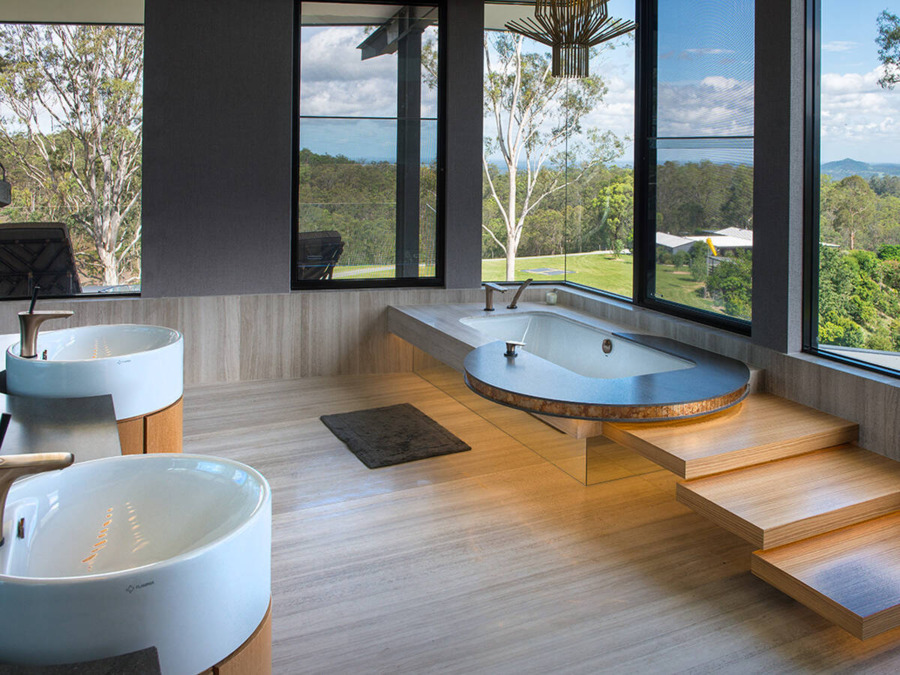Nous utilisons des cookies pour améliorer votre expérience. Pour respecter la nouvelle directive E-Privacy, nous devons demander votre consentement pour définir les cookies. Apprendre encore plus.
Select Shipping Country & Currency
How Much Does It Cost to Install a New Toilet? | 2024 Guide

Major Cost Factors of New Toilet Installation
The total project price depends on your chosen toilet’s make and model, and whether you opt for professional installation.
- Toilet type: Special models and features cost slightly more than a standard toilet.
- Brand: Some brands are more high-end than others.
- Labor: Toilets that require difficult or complex installation will incur more labor costs.
Factor 1: Cost by Toilet Type
The cost of a new toilet depends primarily on its type and features. The most basic toilet is typically a two-piece model with a gravity-assisted flush. This means the bowl and tank are separate pieces connected by plumbing, and gravity helps the water flush waste through the trapway. Different flush systems or toilet shapes come with additional costs.
| Toilet Type | Unit Cost |
|---|---|
| Two-piece toilet | €100–€1,000 |
| Low-flow toilet | €100–€1,500 |
| Dual-flush toilet | €100–€1,500 |
| One-piece toilet | €250–€3,000 |
| Corner toilet | €400–€1,000 |
| Pressure-assisted toilet | €400–€1,200 |
| Wall-hung toilet | €500–€2,500 |
| Double cyclone toilet | €600–€1,200 |
| Smart toilet | €600–€2,000 |
| Waterless composting toilet | €900–€2,000 |
- Two-Piece Toilets (€100–€1,000): Most homes have toilets that consist of two pieces: the tank and the bowl. A plumber will connect the two pieces and then connect the entire unit to your home’s plumbing. Because this type of toilet is so common, it’s available in a variety of styles and designs to fit your bathroom’s decor. Two-piece toilets are also available with multiple bowl shapes. Round bowls take up less space, making the profile of the toilet shorter, but are slightly less comfortable to sit on than elongated bowls. Compact elongated toilets are a compromise between the two shapes. Depending on the shape and features you choose, a two-piece toilet could cost as little as €100 or as much as €1,000.
- Low-Flow Toilets (€100–€1,500): Homeowners looking for a high-efficiency toilet should consider a low-flow model, which uses less water per flush than a standard toilet. These typically cost €100 to €1,500 and use no more than 1.3 gallons per flush compared to a standard 1.6 gallons per flush. You may also save some money on your water bill. Look for the EPA’s WaterSense label to find toilets that meet the highest efficiency and performance standards.
- Dual-Flush Toilets (€100–€1,500): You can conserve water without sacrificing performance by opting for a dual-flush toilet system. These use a standard flush for solid waste and a low-flow flush for liquid waste (around 0.8 gallons). They cost between €100 and €1,500.
- One-Piece Toilets (€250–€3,000): A one-piece toilet is a single unit consisting of a tank and bowl. Because they’re heavier than two-piece toilets, they cost more to ship but are easier to install. One-piece toilets take up less vertical space and look sleeker. They also have fewer cracks and crevices, making them easier to clean. Similar to two-piece toilets, one-piece toilets are available in a variety of styles and bowl shapes. They cost anywhere from €250 to €3,000.
- Corner Toilets (€400–€1,000): Most corner toilets have a two-piece design that pairs a standard bowl with a triangular tank that fits in the bathroom’s corner. They’re less common and therefore more expensive, costing €400 to €1,000. They also have fewer feature and design choices than a standard toilet. However, they help save floor space in a small bathroom.
- Pressure-Assisted Toilets (€400–€1,200): If you’re installing your new toilet in a basement or other below-ground area, it may require extra water pressure to flush waste up into your sewer or septic system. A pressure-assisted toilet can do this. Though these toilets tend to be loud when flushed, they work wonders to prevent clogging and backups. They typically cost €400 to €1,200.
- Wall-Hung Toilets (€500–€2,500): Wall-hung or wall-mounted toilets have a visible bowl protruding directly from the wall with empty space underneath. The tank may be mounted on the wall or installed inside it, which means these toilets generally have higher installation costs—along with a unit cost of €500 to €2,500. They’re a good choice for small bathrooms because they save on floor space and can be installed in locations that can’t accommodate a waste pipe through the floor.
- Double Cyclone Toilets (€600–€1,200): A double cyclone or double-jet flushing system is another water-saving method that uses high-speed water streams and extra-smooth glazing to ensure more efficient and complete flushes. Toto is the most popular manufacturer of these toilets, which start around €600 but may cost €1,200 or more.
- Smart Toilets (€600–€2,000): Smart toilets are sleek and come with many features. The exact features depend on the brand and model, but many have remote controls, self-cleaning systems, and touchless flushing to increase convenience and comfort. Smart toilets typically link with other smart-home systems and your mobile device. Smart toilets range from €600 to €2,000 and may require specialty installation.
- Waterless Composting Toilets (€900–€2,000): If you’re installing a toilet in an RV or outhouse and there’s no way to add a water supply line, you can opt for a dry toilet that composts waste instead of flushing it. The toilet bowl sits above a composting tank that uses bacteria and fungi along with ventilation and carbon additives to break down waste. These water-saving toilets usually cost between €900 and €2,000. Current models are surprisingly good at minimizing odors.
Factor 2: Cost by Brand
The cost of a new toilet does vary by brand, though most companies offer a variety of models from budget-friendly to high-end. Here are some of the most popular toilet brands.
| Brand | Unit Cost |
|---|---|
| Delta | €100–€280 |
| Glacier Bay | €110–€1,600 |
| American Standard | €210–€860 |
| Kohler | €250–€8,625 |
| Swiss Madison | €350–€1,300 |
| Toto | €360–€2,800 |
Factor 3: Labor Cost
Toilet installation costs depend on the job’s complexity. A local plumber may charge €100 for a simple one-piece toilet or €900 for a wall-mounted toilet with a hidden tank. Extra work on your plumbing can cost an additional €75 to €150 per hour. Anything that increases work time also increases price.
Additional Cost Considerations
Beyond toilet type, brand, and labor, here are some other factors that may affect your toilet project’s total price.
- Additional Features
High-end and smart toilets may come with features such as lighting, music, and deodorizing systems. Many of these are pre-installed during manufacturing, but there are some upgrades you can add to your existing toilet. Heated seats often cost €100 to €800, and you can have a bidet feature professionally installed for €500 to €1,500. - Additional Plumbing
If you need leaky or corroded pipes fixed as part of a toilet replacement project, expect a plumber to charge €75 to €150 per hour. The same is true for replacing the wax ring or toilet flange that anchors the toilet to the ground. - Location of Toilet
The best way to minimize costs is by selecting a toilet with similar dimensions to your previous one and installing it in the same location. Moving any plumbing features to accommodate a new toilet will increase labor time and therefore price. Labor costs will also be higher if the area is not easily accessible. - Replacing Flooring and Drywall
Some toilet installations require moving or replacing flooring or drywall, particularly if you’re switching to a model with a different size or shape. Any water damage from previous leaks must also be fixed. Replacing flooring typically costs €8 to €24 per square foot. Drywall repair can cost €50 to €100 per square foot. - Removing an Old Toilet
Unless you’re working with new construction, you’ll need to remove your old toilet before installing the new one. Toilet removal and disposal usually costs €100 to €200, though it will be slightly more if you’re removing a wall-hung commode.
How to Save on New Toilet Costs
Even if you hire a professional to install your new toilet, you can save money by following these tips.
- Remove and dispose of the old toilet yourself.
- Choose a standard model without special features. Usually, this means a one- or two-piece toilet.
- For long-term savings, choose a water-efficient toilet. Low-flow and dual-flush models typically don’t cost more than standard toilets but will decrease your water bill.
- Get estimates from at least three local plumbers before hiring one.
- Talk to your chosen plumber about possible rebates or discounts.
Signs You Need a New Toilet
Sometimes it’s obvious that your toilet needs replacing. Other times, the signs are more subtle. You may need a new model if you notice any of the following:
- The toilet seat wobbles when you sit on it
- Your toilet requires increasingly frequent repairs
- Your toilet clogs often
- Your toilet runs constantly despite a new flush valve seal or flapper
- There are leaks or cracks in the tank or bowl
- Your toilet is 25 years or older
DIY vs. Professional Toilet Installation
Homeowners should hire a licensed plumber for toilet replacement in most cases. However, there are some instances in which a do-it-yourself (DIY) toilet installation, while challenging, can be done. Here’s how to decide.
Professional Installation
If you’re doing broader bathroom renovations that involve moving or upgrading the toilet, you’ll want to opt for professional installation. A licensed plumber will ensure the toilet is properly hooked up and the plumbing lines are in good shape. A plumber can also perform any major repairs, such as drain pipe replacement. Flooring and drywall contractors can repair floor or wall damage in the process of replacing the toilet. The installation process typically takes two to four hours, though potentially longer if substantial repairs are needed.
DIY Installation
If your new toilet is the same size and type, is in the same location as the old one, and requires no plumbing changes, you may be able to install it yourself. Keep in mind this is a difficult project that requires heavy lifting and plumbing knowledge. You’ll need tools such as a utility knife, hacksaw, adjustable wrench, and putty knife. You’ll also need supplies for caulking and cleaning up when you’re done. While you’ll save on labor costs, accidentally damaging your home’s plumbing could be costly. If you make mistakes, you may need a licensed plumber to fix them anyway.
Our Recommendation
If your toilet is old, outdated, or breaks frequently, it may be time to upgrade. Modern toilets offer everything from standard features and appearance to smart functions and energy efficiency. Unless you’re an experienced DIYer, it’s best to hire a toilet installation professional. A licensed plumber can do the job quickly and correctly. Most will also offer a warranty on their work in case of any issues.


 eu
eu